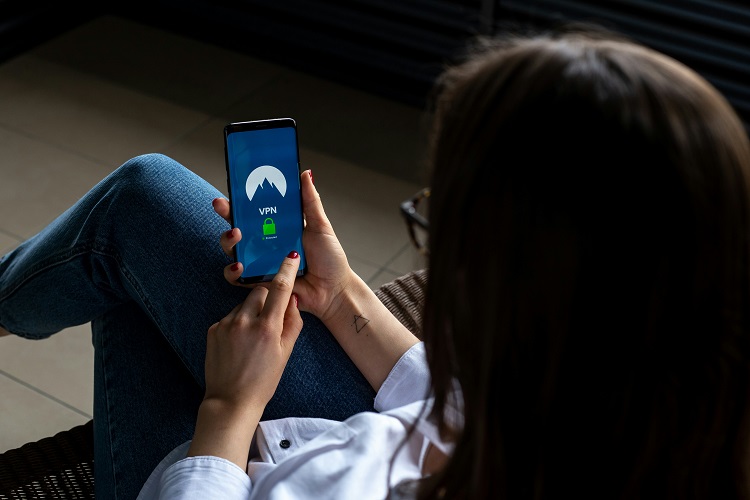Private chats and direct messages (DMs) are meant to provide a safe, intimate space for people to connect and communicate. However, sometimes, these conversations can take a disturbing turn, with one party exhibiting creepy or inappropriate behaviour. It’s important to recognize the warning signs and know how to respond effectively.
Online dating and chat apps have become the norm in today’s digital age. However, it is a scary world for women as many guys tend to cross the line, making them uncomfortable and creeped out. Camila Fersh, a chat host from Arousr, the adult text and video chat platform, shared some common creepy behaviours that guys should avoid in a one-on-one chat. So, if you want to ensure you are not making your online chat partner uncomfortable, read on.
Understanding Creepy Behavior in Private Chats
Creepy behaviour encompasses a spectrum of actions that induce discomfort, fear, or unease in online conversations. From unsolicited explicit messages to persistent requests for personal information, the manifestations of creepy behaviour are multifaceted. Camila Fersh, with her extensive experience in adult chat services, provides invaluable insights into the underlying motives and patterns of such behaviour.
Creepy behaviour in private chats can manifest in various ways, but some common red flags include:
- Excessive or inappropriate sexual comments or advances
- Requests for personal information or photos without consent
- Threats, harassment, or attempts at emotional manipulation
- Sharing private conversations without permission
- Expressing disturbing or violent thoughts
- Refusing to respect boundaries or take “no” for an answer
The key is that the behaviour makes you feel uncomfortable, unsafe, or violated in some way. Trust your instincts – if something feels off or creepy, it probably is.
Motivations Behind Creepy Behavior
There are a few potential reasons why someone might engage in creepy behaviour online:
- Lack of social awareness or empathy: Some people simply don’t understand how their words and actions come across or how they make others feel. They may not have developed proper social skills.
- Desire for attention or control: Creepy behaviour can be a way for someone to get a reaction, exert power over another person, or feel important. Negative attention is still attention.
- Underlying mental health issues: In some cases, creepy behaviour may stem from conditions like narcissism, antisocial personality disorder, or psychopathy. The person may lack remorse or concern for others.
- Misogyny and entitlement: Many creepy interactions, especially those targeting women, are rooted in misogynistic attitudes and a sense of entitlement to women’s time, bodies, and attention.
The Anatomy of Creepy Behavior
Creepy behaviour often stems from a sense of entitlement, anonymity, or a skewed perception of boundaries. Camila Fersh delves into the psychological underpinnings of bizarre behaviour, highlighting the role of power dynamics and social norms in shaping online interactions. By dissecting real-life examples, she elucidates the tactics employed by perpetrators and their impact on victims’ well-being.
Avoid Sharing Unsolicited Pictures
The first creepy behaviour that Camila suggests guys should avoid is sharing unsolicited pictures. Be mindful that sending nudes, Dick pics, and other inappropriate images without consent is not just offensive but also illegal. Please don’t assume that your chat partner is interested in viewing personal pictures and invading their privacy in any way. Always seek permission, and if they aren’t interested, respect their boundaries.
Read more: Explore Luxury Dating Green Flags
Using Too Many Emojis
In today’s digital age, it’s no surprise that emojis have become a popular way of expressing ourselves through text messages. Emojis have spiced up our conversations from happy faces to cute animals. However, regarding sexting, there’s a fine line between being pretty and downright overwhelming. Using too many emojis can come across as immature or distracting, taking away from the moment’s intimacy. While they may add some flare to your sexts, it’s essential to use them in moderation and allow your words to do the talking. Remember, less is sometimes more.
Avoid Starting it with Dirty Talk.
Secondly, dirty talk or sexting should be taken slowly. Some guys feel that explicit chat is what their chat partners crave, but Camila refutes that idea. Be respectful of the pace and verbal cues provided by your chat partner. If they are comfortable with it, slowly and gradually delve deep into your sexual desires. However, if they are not receptive to your advances, take it as a hint and respect their space.
Using Too Many Emojis
In today’s digital age, it’s no surprise that emojis have become a popular way of expressing ourselves through text messages. Emojis have spiced up our conversations from happy faces to cute animals. However, regarding sexting, there’s a fine line between being attractive and downright overwhelming. Using too many emojis can come across as immature or distracting, taking away from the moment’s intimacy. While they may add some flare to your sexts, it’s essential to use them in moderation and allow your words to do the talking. Remember, less is sometimes more.
Avoid Asking Personal Questions
When it comes to sexting, it’s essential to tread carefully. While exploring intimate topics with a partner can be exciting, it’s important to remember that boundaries exist for a reason. One common mistake people make when sexting is asking personal questions that cross those boundaries. Not only can this make the other person uncomfortable, but it can also damage the trust and intimacy that you’ve built up. Instead, focus on sharing your desires and experiences without overly prying too heavily into your partner’s private life. Following this rule, you can keep things fun and flirty without sacrificing respect or consent.
Asking About Sexual History can be a Turn-Off.
Thirdly, asking probing questions about their appearance, sexual history, or sexual preferences can be a major turn-off. Avoid making them uncomfortable by asking questions such as “What do you wear during intercourse?” or “When was the last time you had sex?” Please respect their privacy, and don’t make them uncomfortable by requesting overly personal information.
Avoid Name Calling in Sexting
Sexting can be an exciting way to enhance your relationship and build intimacy with your partner. However, being mindful of your language during these exchanges is essential. Name-calling, even if meant as a joke, can hurt and damage your partner’s self-esteem. It’s necessary to establish boundaries and communicate what language is off-limits. Avoiding name-calling can create a more favourable environment for expressing your desires and fantasies. Remember, the goal is to build a healthy and trusting connection with your partner, not to tear them down with hurtful words.
Avoid Using Pet Names
Similarly, avoid using pet names. It might sound charming in movies and TV shows, but it’s not appealing. Using cutesy nicknames like “babe,” “honey,” or “sweetie” is a huge turn-off and can be viewed as a sign of disrespect. Use your partner’s name instead; it will make them feel valued and respected.
Treat your Partner with Respect
Lastly, remember texting or chatting demands the same respect and decorum as in-person conversations. Please treat it with the same care and know they are living, breathing people with feelings. Avoid making sexual advances or trying to dominate the conversation. Be natural, and let the conversation flow.
Conclusion
Creepy behaviour in private chats poses a significant challenge in the digital age, necessitating collaborative efforts from platforms, users, and policymakers alike. Through the insights shared by Camila Fersh of Arousr, this article has offered a nuanced understanding of the underlying dynamics, impact, and mitigation strategies associated with creepy behaviour. By prioritizing user safety, fostering a culture of consent, and leveraging technological innovations, we can pave the way towards a safer and more inclusive digital future.



